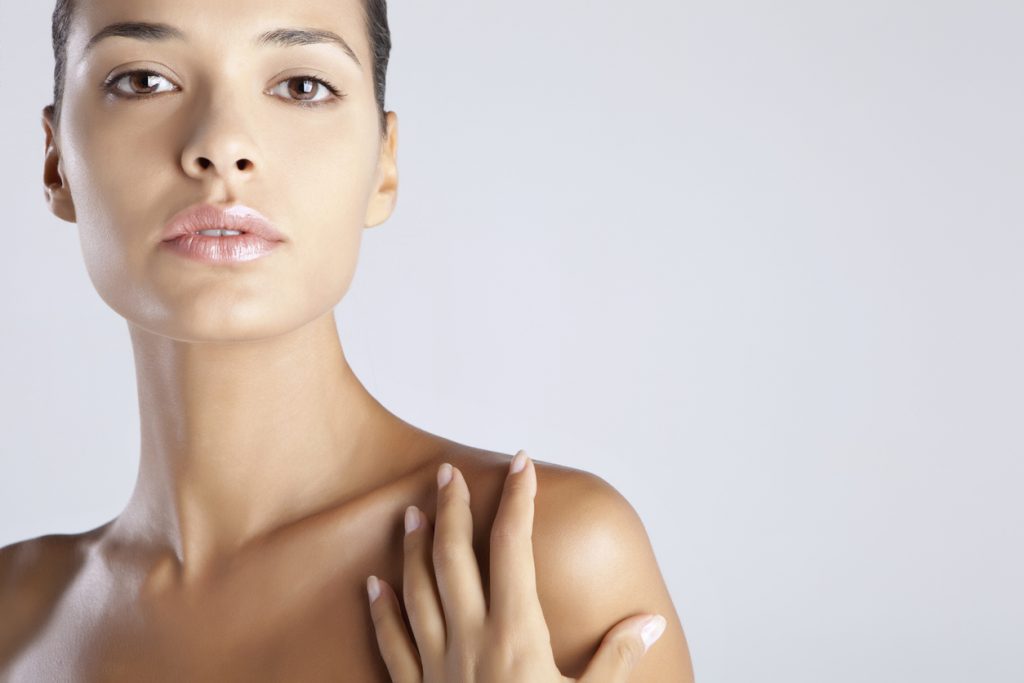At Forme Spa we are very mindful about the products we use for our treatments as well as those we stock. When you’re enjoying a relaxing facial treatment or massage with us, we want you to rest assured that your skin is being exposed to only the highest quality ingredients, with no toxins to worry about.
It’s been estimated that women are exposed to an average of 168 chemicals every day from using personal care products, so it makes sense to limit exposure, where possible, to anything that may be harmful. The good news is that these days so many brands care about clean beauty, so it’s become a lot easier to find the best products.
Wherever possible at Forme Spa, we try to avoid products containing the following. But for most of us, these chemical names mean very little! Here’s some more information about each one of them, why they’re best avoided and where you might spot them
- Parabens
- Synthetic Fragrance
- EDTA
- 1,4-Dioxane Contamination
- Ethanolamines
- Butylated hydroxyanisole and butylated hydroxytoluene
- Coal tar
- Hydroquinone
- Methylisothiazolinone and methylchloroisothiazolinone
- Thimerosal
- Toluene
- Triclocarban and triclosan
- Phthalates
- Formaldehyde
Parabens are preservatives used in many personal care products to keep them fresh and prolong shelf life. The main concern with parabens is that they may be a hormone disruptor. One study found parabens in breast tissue, and though it didn’t establish a causal link, the association was enough for many to decide that parabens are best avoided. These days many skincare products will note that they are paraben-free.
Synthetic Fragrance sounds harmless enough, but this term can be used as a generic umbrella term for many different chemicals that brands aren’t legally required to disclose. Therefore the risk is that you do not know what you are getting, and you aren’t able to break down exact ingredients to check for anything you want to avoid (for example, if you are sensitive to a ‘hidden’ ingredient).
EDTA or ethylenediaminetetraacetic acid is a common skincare ingredient used for foaming and as a preservative. It may cause irritation to some skins, but also has attracted controversy with claims it can impact reproductive health. Although these effects were only found with extremely large concentrations of EDTA, it’s still one that’s best to avoid where possible.
1,4-Dioxane itself is not an ingredient purposely added to skincare, but rather something that forms as a by-product. It is usually found in sudsy products like shampoo and body wash but won’t be listed on the label. It has been found to be carcinogenic and also pollutes the water supply. To avoid it, steer clear of ‘ethoxylated ingredients’ – namely foaming against such as sodium laureth sulfate, PEG compounds, or chemicals that end with -xynol, -ceteareth, and -oleth.
Ethanolamines are stabilisers and may be abbreviated as MEA, DEA or TEA. They can be a skin irritant and have also been banned in Europe over concerns about being carcinogenic. When in doubt, they’re best avoided.
Butylated hydroxyanisole and butylated hydroxytouene (aka BHA and BHT) are synthetic antioxidants used as preservatives in products such as lipstick and moisturiser. As well as possibly causing allergic reactions, they’re also linked to hormone disruption. In high doses they can mimic estrogen.
Coal tar – just the name doesn’t sound appealing! It’s a known carcinogen derived from burning coal. It’s used as a colour in many cosmetics, and in hair dye, usually under the name CI followed by a series of numbers. While it’s usually used in very low quantities, nevertheless it is carcinogenic (cancer causing).
Hydroquinone is a bleaching agent most commonly found in ‘brightening’ skincare. It has been linked to cancers and immune issues and is banned in several countries for this reason.
Methylisothiazolinone and methylchloroisothiazolinone are preservatives which can both be skin irritants. They have been linked to organ and nervous system issues.
Thimerosal is a mercury-based preservative found in many makeup and skincare products and can also be used as a skin-lightening ingredient. Mercury is highly toxic. It’s associated with skin irritation, rashes, and discoloration.
Toluene is used in nail polish and hair dye and can also be specified as DHT. It has been associated with brain toxicity and can be especially dangerous during pregnancy.
Trilocarban and triclosan are antibacterial agents found in hand sanitiser, hand wash and mouthwash. They’ve been phased out by many brands due to their links to hormone disruption, negative effects on the environment and possible role in increasing germs’ resistance to antibiotics.
Phthalates are a group of chemicals that make plastics more durable but can also be used to help perfume stick to skin, and may be found in eyelash adhesive and nail polish. They’re deemed ‘everywhere chemicals’ thanks to their ability to leech into other things. A recent 2021 study found them in more than 80% of fast foods tested. Phthalates are hormone disruptors.
Formaldehyde is a known carcinogen that’s often in hair straightening products, nail polish, eyelash glue and others. It was the reason many ‘Brazilian blowout’ type products were banned. It may not be listed on its own, but many other preservatives release formaldehyde, so watch out for bronopol, DMDM hydantoin, diazolidinyl urea, imidazolidinyl urea, and quaternium-15.
If you have any questions about the ingredients in your skincare, please just ask your therapist.


